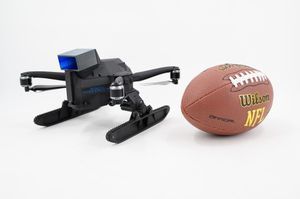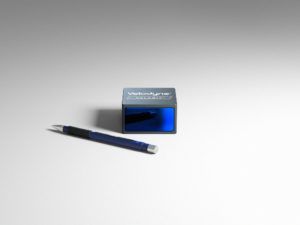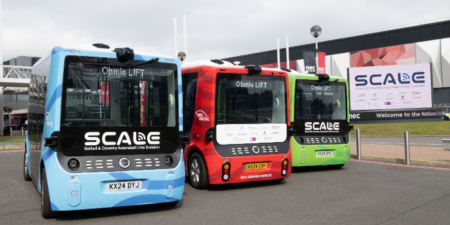Supplier of sensing systems for the autonomous vehicle (AV) industry, Velodyne Lidar Inc. launched a new US$100 lidar unit at CES 2020, with the Velabit sensor bringing new levels of versatility and affordability to the 3D laser-perception marketplace.
Now Velodyne’s smallest sensor, the new Velabit unit makes use of the company’s innovative lidar technology and manufacturing partnerships for cost optimisation and high-volume production. The Velabit perfectly complements Velodyne’s existing sensor portfolio and advances the company’s mission to make high-quality 3D lidar sensors readily accessible to everyone. Despite its small size, the sensor delivers the same technology and performance found on Velodyne’s full suite of state-of-the-art sensors and will be the catalyst for creating endless possibilities for new applications in a variety of industries. The compact Velabit can be embedded almost anywhere within vehicles, robots, unmanned aerial vehicles (UAVs), roadside infrastructure and more. Designed to be easy to manufacture at mass production levels, the Velabit will be available to Velodyne’s customers across North America, Europe and Asia mid-2020.
The Velabit is engineered to be an optimal automotive grade lidar solution for Advanced Driver Assistance Systems (ADAS) and autonomous vehicles (AVs). It enables robust perception coverage for Blind-Spot Monitoring, Cross Traffic Detection, Automatic Emergency Braking (AEB), and Pedestrian and Bicyclist Safety. Highly configurable for different customer application, the mid-range sensor can be combined with other Velodyne lidar sensors, such as the Velarray, for high-speed operation or function as a standalone lidar solution in low-speed applications. At its affordable price-point, the Velabit will be of interest to the general transportation industry, with potential applications including traffic monitoring, tunnel safety and tolling systems.
 The Velabit addresses the cost, safety and design challenges of autonomous solutions while delivering strong sensor performance. Velabit’s main features are:
The Velabit addresses the cost, safety and design challenges of autonomous solutions while delivering strong sensor performance. Velabit’s main features are:
- Integrated processing in a compact size of 2.4 x 2.4 x 1.38 inches (6 x 6 x 3cm), smaller than a deck of playing cards, to be easily embedded in a wide range of solutions;
- Range up to 328 feet (100m);
- Outstanding field of view (FoV): 60-degree horizontal x 10-degree vertical;
- Highly configurable to support a range of applications;
- Proven, Class 1 eye-safe 903 nanometre technology;
- Bottom connector with cable length options.
“The Velabit democratizes lidar with its ultra-small form factor and its sensor pricing targeted at US$100 in high-volume production, making 3D lidar available for all safety-critical applications,” said Anand Gopalan, Velodyne’s chief executive officer. “Its combination of performance, size and price position the Velabit to drive a quantum leap in the number of lidar-powered applications. The sensor delivers what the industry has been seeking: a breakthrough innovation that can jump-start a new era of autonomous solutions on a global scale.”
Alberto Lacaze, president of autonomy developer Robotic Research, said, “Before the Velabit there was no suitable small and lightweight lidar for small unmanned aerial vehicles and unmanned ground vehicles performing obstacle avoidance or mapping. Since our Pegasus Mini is a fully autonomous ground and air vehicle, it requires the Velabit’s size and versatility. In addition, the Velabit enables the most advanced GPS-denied HD mapping in the industry. The Velabit fills a much-needed space in the market and is currently in a class of its own.”





